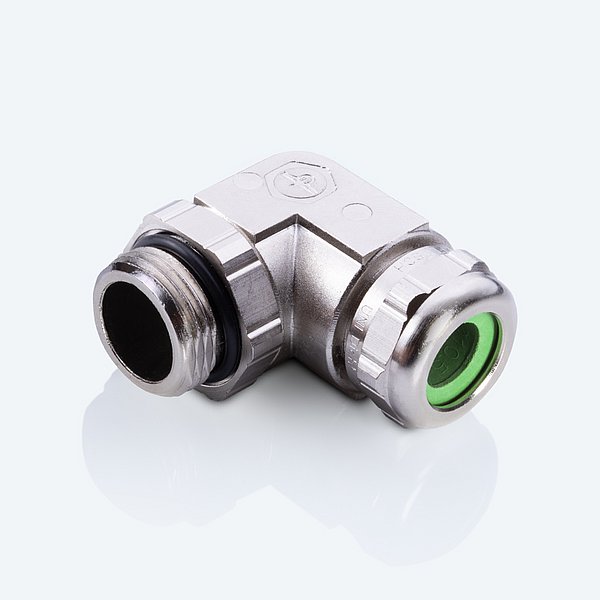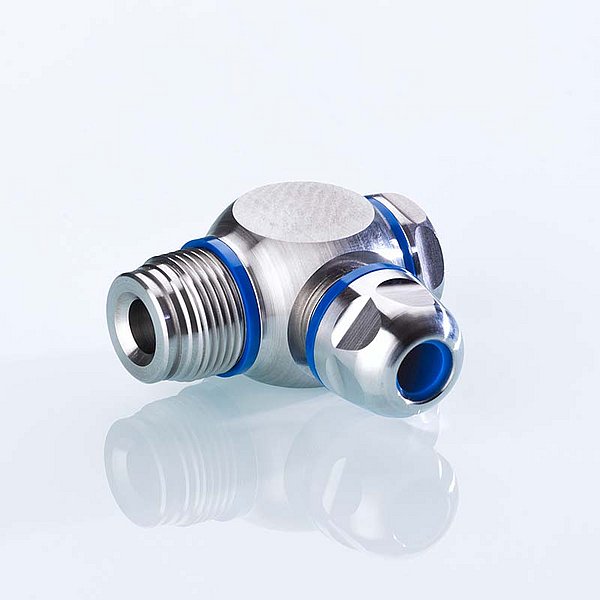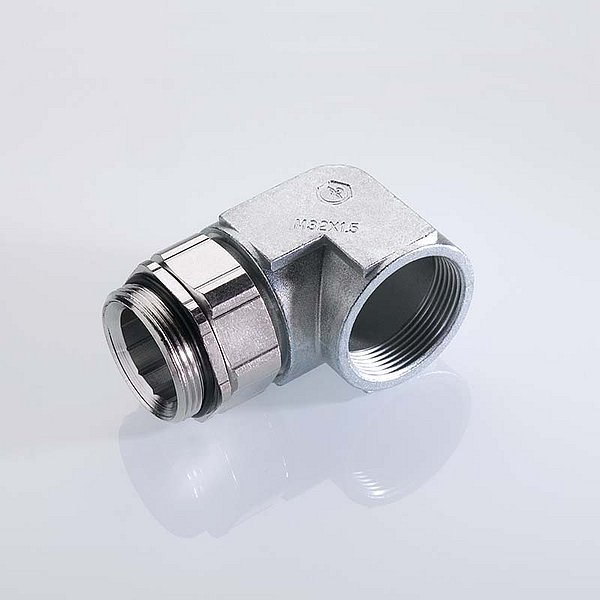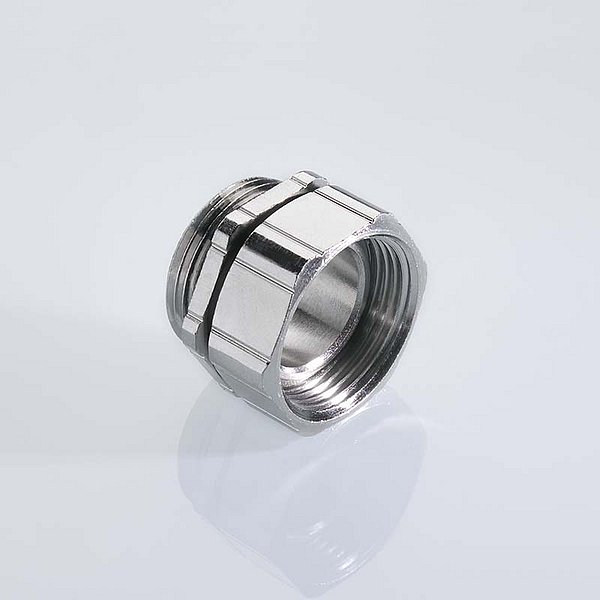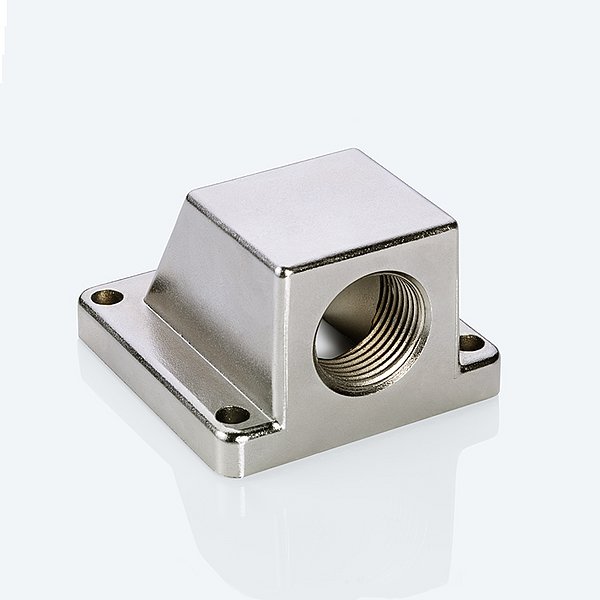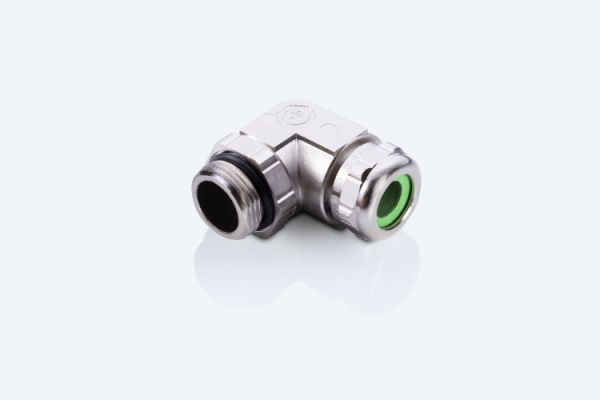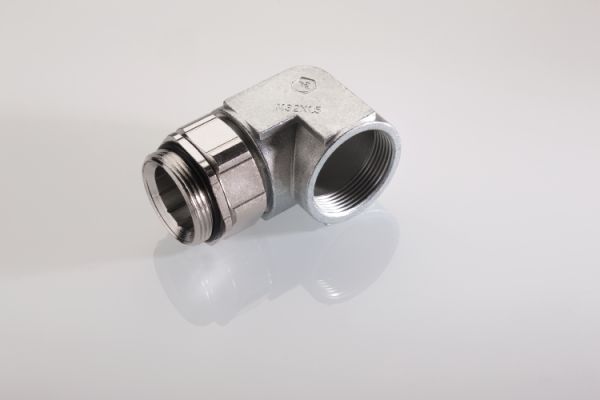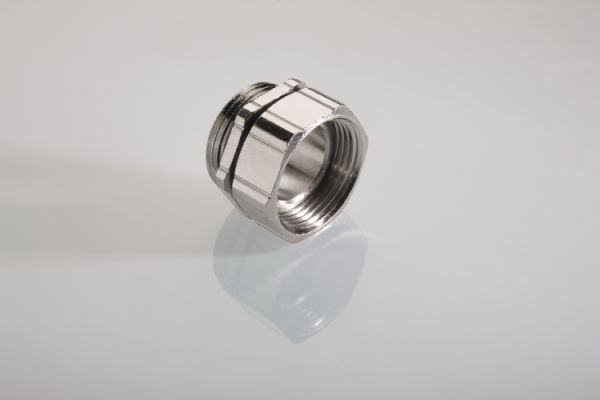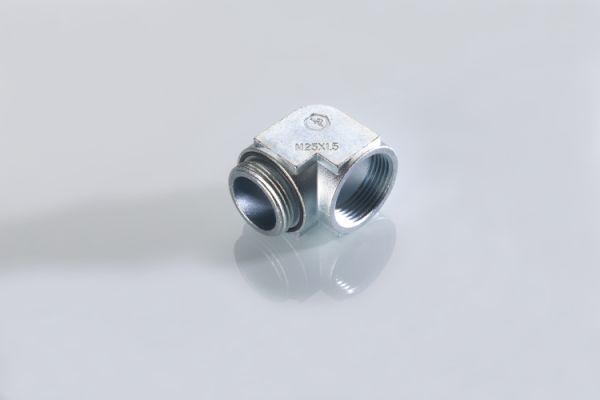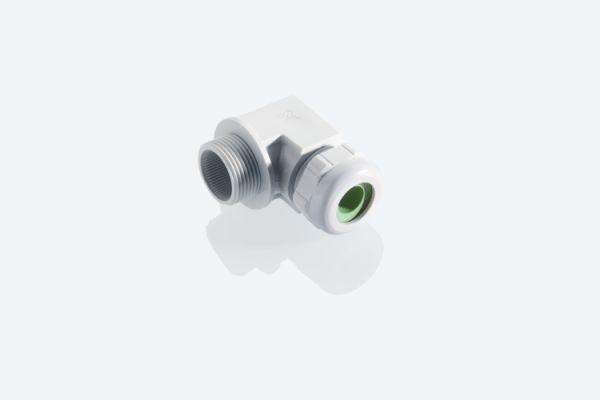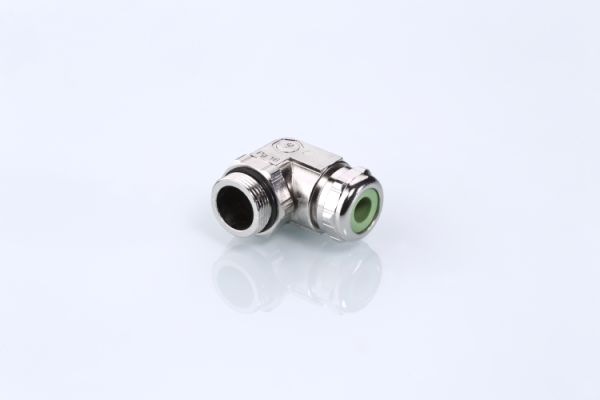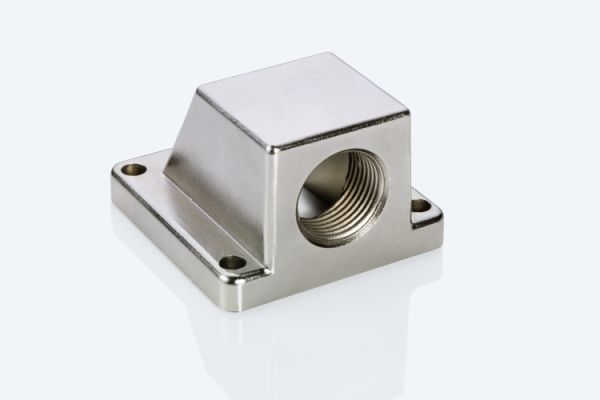PFLITSCH’s elbows and flanges –
the perfect way to negotiate bends
Routed in the right direction
You can lay cables around bends up to 90° without any problem thanks to PFLITSCH’s coordinated range of elbows. This consists firstly of elbow cable glands with an angled body that can be turned through 360° and secondly of non-rotating flange elbows in various lengths, which enable you to feed cables out of a control cabinet or enclosure at an angle.
Maximum convenience
PFLITSCH elbow glands are first choice whenever cables need to be routed out of an enclosure at a very tight angle and then laid parallel to the enclosure wall. If those cables have to be brought out of a control cabinet or machine enclosure through an opening without a threaded hole and at the same time sealed reliably, we recommend PFLITSCH flange elbows. In this case, an O-ring seals the gap between the flange and the enclosure while a gland seals the cable at the point of exit.
![[Translate to English:] [Translate to English:]](/fileadmin/_processed_/1/1/csm_Katalog_KV_11_Winkel-Flansche_Elbows-flanges_d489f90b92.png)
documentCreationDateTime: 2024-05-08
fileUploadDateTime: 2024-01-11
1.9 MB
EN
Your advantages – convincing in every respect
Small mounting height ideal where space is limited
Very high strain relief
Excellent tightness of seal, with protection ratings up to IP 68
Maximum mechanical resilience and corrosion resistance
Elbow glands provide high temperature resistance up to 200 °C in the die-cast zinc version
Very easy to assemble
Design/properties
UNI elbow cable gland
This cable gland has a right-angled body and an O-ring to seal the gap to the enclosure. You can align it in different positions with the lock nut when it is assembled. All UNI elbow cable glands achieve roughly the same technical specifications as the standard UNI Dicht gland.
Material, gland body: Die-cast zinc or poycarbonate,
Material sealing inserts: TPE, TPE-V or silicone
Temperature range die-cast zinc: –40 C/+130 °C, –55 °C/+200 °C
Temperature range polycarbonate: –20 °C to +100 °C
Sizes: M16 to M25 and Pg 9 to Pg 21
Types of protection: IP 65 and IP 68/IP 68 up to 10 bar
blueglobe CLEAN Plus hygienic elbow
An EHEDG-compliant solution meeting the highest hygienic requirements, for routing cables out of a control cabinet or machine at right angles. This variant can be turned through 360° in order to route the cables in any direction. Also available as an EMC variant.
Material, gland body: Stainless steel
Material sealing insert: Silicone
Temperature range: –55 °C to +180 °C
Size: M10 to M32
Type of protection: IP 68 up to 15 bar, IP 69
Elbow and elbow with coupling
The elbow has a thread for installation in a control cabinet or enclosure. It must be combined with a separate cable gland for use as a cable entry. Elbow models either with or without a coupling are available, in both cases made from die-cast zinc. The coupling enables them to be turned easily through 360° for optimal cable routing.
Material, gland body: Die-cast zinc
Size: M16 to M 32
Type of protection, elbow with coupling: IP 68 up to 10 bar
Type of protection, elbow: IP 65. When using elbows, please also note the type of protection of the required cable gland.
Flange elbow
If an enclosure or control cabinet does not have a threaded hole for a cable gland, you can nevertheless feed the cable into it at right angles thanks to our flange elbows in various lengths. In this case, the gland that seals the cable is screwed into the flange’s outlet thread. The flange elbow is then bolted to the enclosure or the control cabinet and sealed with an integral O-ring. Flange elbows are also suitable for use with large cable diameters.
Material: die-cast zinc or polycarbonate
Sizes: M16 to M63 and Pg 9 to Pg 48
Type of protection: IP 68 up to 10 bar. When using flange elbows, please also note the type of protection of the required cable gland.
Applications and tasks
Due to their special properties and benefits, PFLITSCH elbow cable glands and flange elbows are used in various branches of industry such as electric motor production, mechanical and plant engineering, equipment manufacturing or automation. PFLITSCH can also supply the stainless steel blueglobe CLEAN Plus hygienic elbow as an EHEDG-compliant solution for applications placing particularly high demands on hygiene.
Product portfolio elbows and flanges
FAQ
An elbow cable gland is a specific type of cable gland with an angled body through which a cable is fed into an enclosure or a control cabinet. The elbow cable gland is assembled in a threaded hole provided for this purpose. A flange elbow, on the other hand, is screwed to a simple opening that is unsuitable as a threaded hole and must be combined with a compatible cable gland in order to seal the cable. Both components are designed to allow cables to be brought out at right angles and laid parallel to the enclosure wall.
A cable gland with bending protection is mainly designed to protect the bent section of the cable from mechanical loads. It is not suitable for routing cables out of an enclosure at very tight 90° angles. An elbow cable gland or an elbow flange is required for this purpose.
When you assemble an elbow cable gland without a coupling, you can only align and tighten it in a particular position using a lock nut. This is much easier with a coupling because the gland can also be aligned after bolting.
Further information
Cable trunking
You’re also interested in the multitude of possibilities offered by our cable trunking solutions? Or are you looking for a concrete solution to a specific cable laying project? The Cable Trunking section provides an overview of all of our models and highlights their specific advantages and benefits.
Cable routing
Downloads
Are you looking for a comprehensive overview of PFLITSCH’s products and services? You can find the latest PFLITSCH catalogues and brochures in the Downloads section (PDF files).
Contact
You have questions about a product, would like to make an appointment for a one-to-one consultation or would like to experience our products live? Get in touch! We look forward to hearing from you.
Contact


